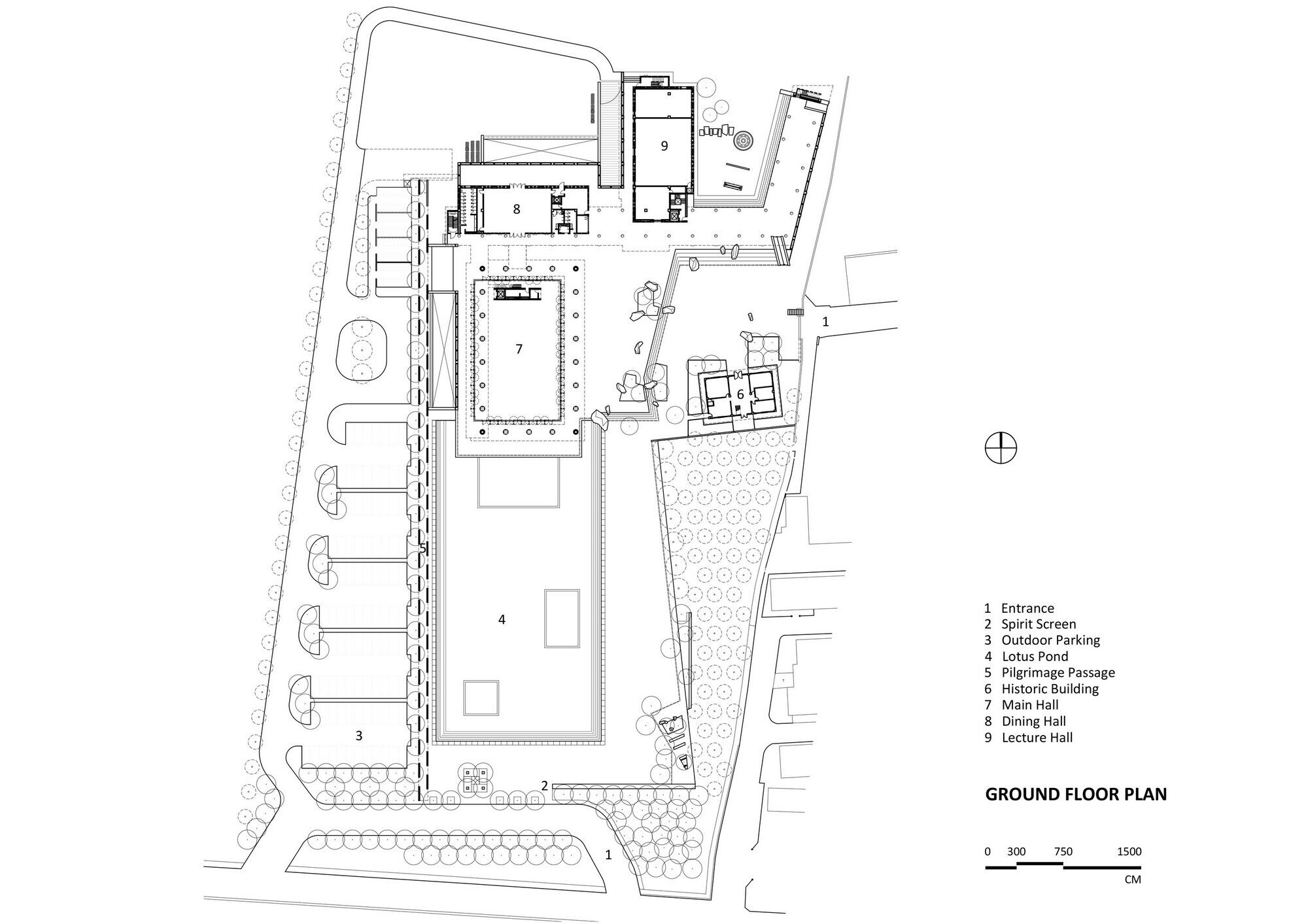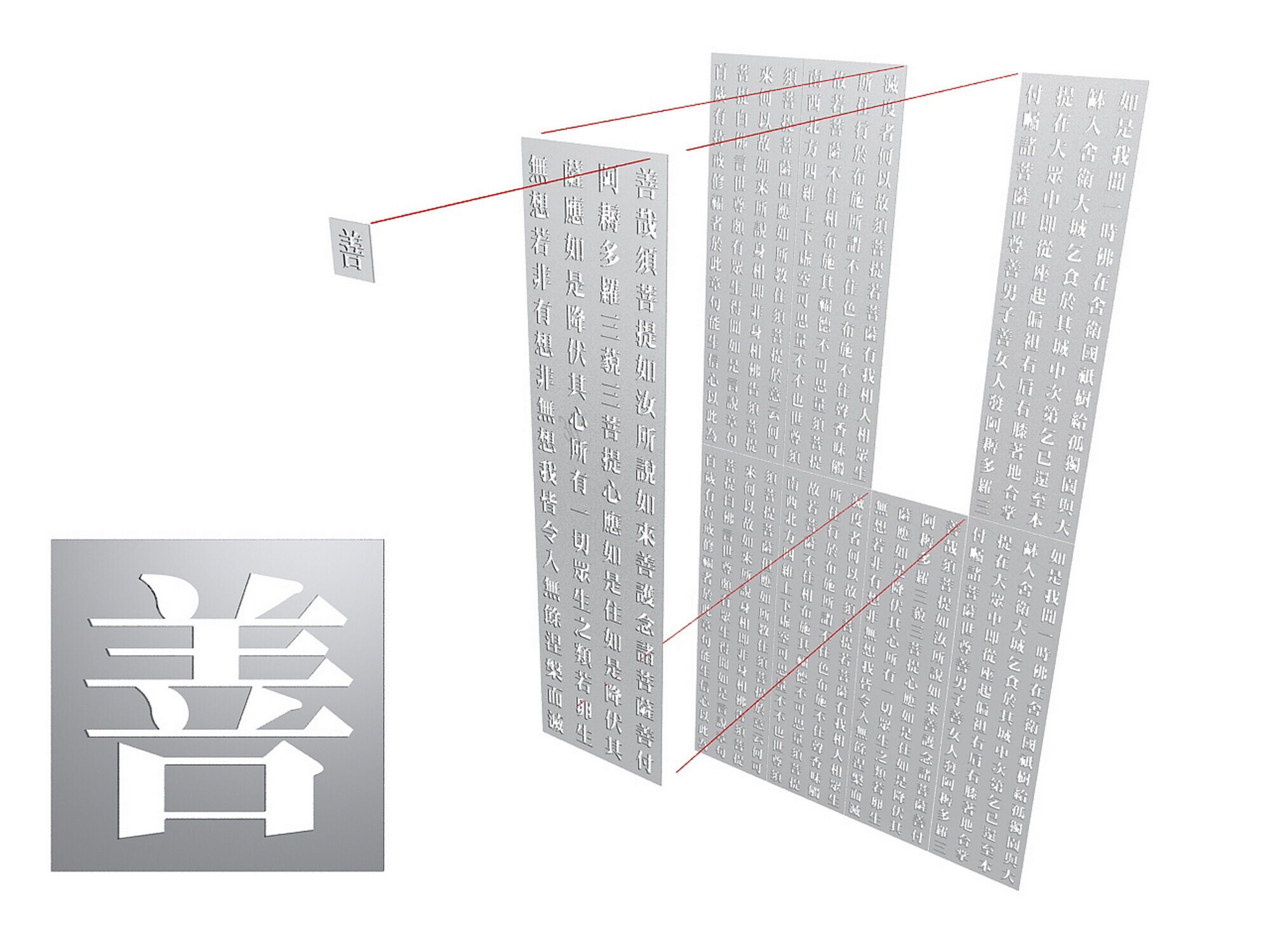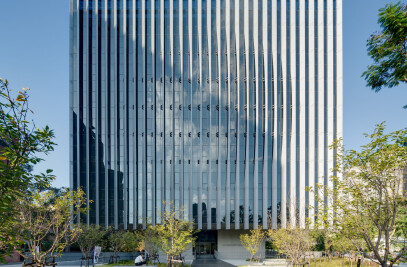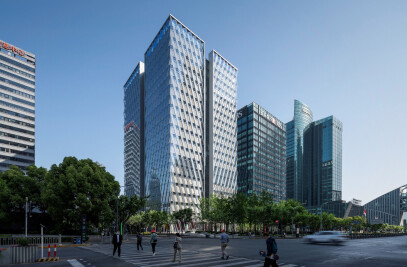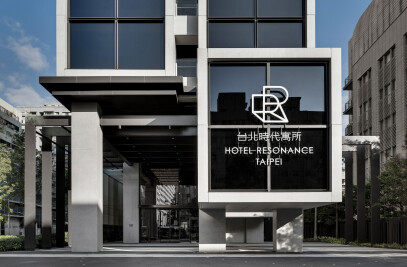The Water-Moon Monastery is a work of religious architecture that sits quietly facing the Keelung River, with Mount Datun as its backdrop. Past two walls between the busy highway and the supernatural space, the view immediately opens up to an 80-meter-long lotus pond which reflects parts of the shrine at the far end—a mirage of the oversized colonnades and the flowing golden drapes in between—appearing and disappearing with the ripples. This dual image invites visitors to sit on the steps around the pond and contemplate this juxtaposition of reality and illusion. One may ponder on a Zen question, “is it the wind? Is it the drapes? Or is it the unsettling mind that’s causing the movement?”
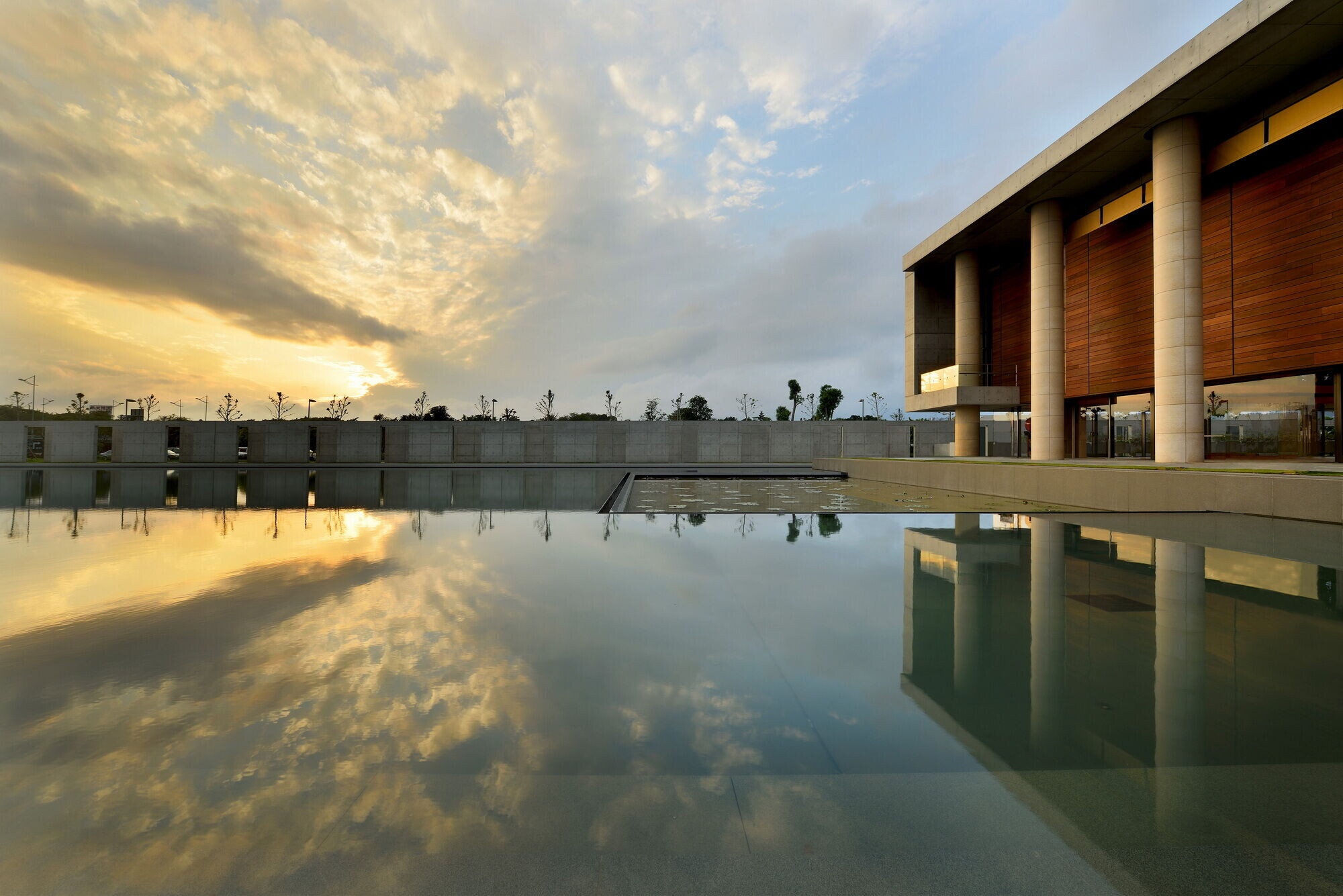
The exterior wall of the building adjacent to the main hall features the 5,180-word Diamond Sutra, engraved in large Chinese characters. Each precast concrete panel was perforated with a single character—reflecting the Chinese movable type invented centuries ago to reproduce this and other scriptures, while also cleverly balancing the primitive and the modern by employing contemporary fabrication techniques to present an ancient text.
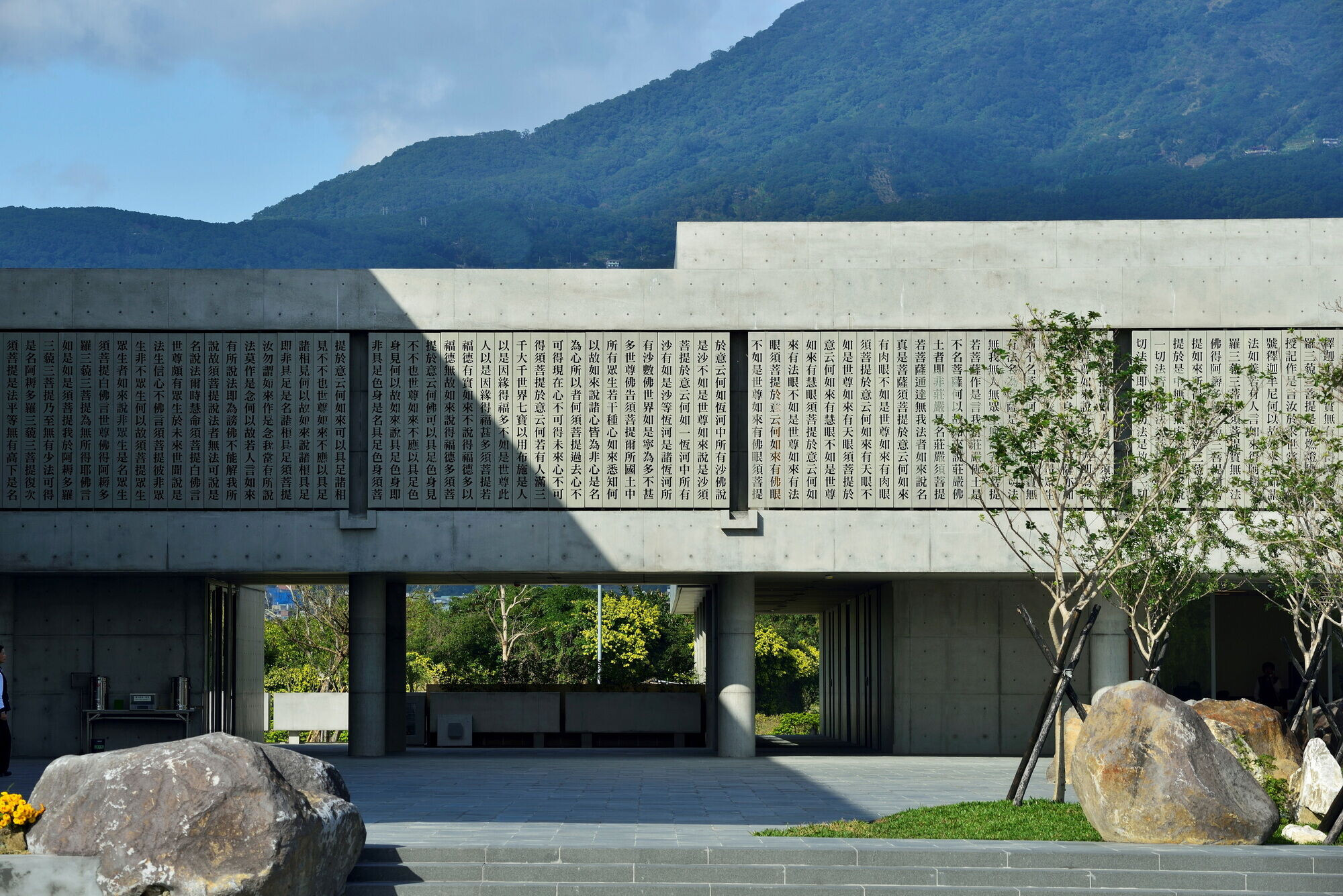
As daylight shines through these apertures, the Buddha’s teachings are brought to life in the interior spaces, projected as a text of light, and after rain, the text is seen reflected on the still-wet exterior pavements. This unique presentation of the sutra was designed to complement the design of the monastery and, combined with the tranquility of the setting, to silently communicate the philosophy that underpins it.

Between the main hall and the stone wall is a large open courtyard that appears untouched by time, populated by a series of gigantic rocks that rest comfortably in place, holding their ground as if they were installed long ago. As Michael Speaks, Dean of Syracuse University’s School of Architecture, puts it, these irregularly sited boulders “recall another era, if not another age. One is left to wonder whether the architect placed these massive rocks in the courtyard, or whether the courtyard was designed around them to accommodate their glacial, rather than human, placement” (Speaks 1). Such are the questions that tend to arise when one enters this space, but they are usually left unresolved—and that, in itself, is part of the fascination of the place.
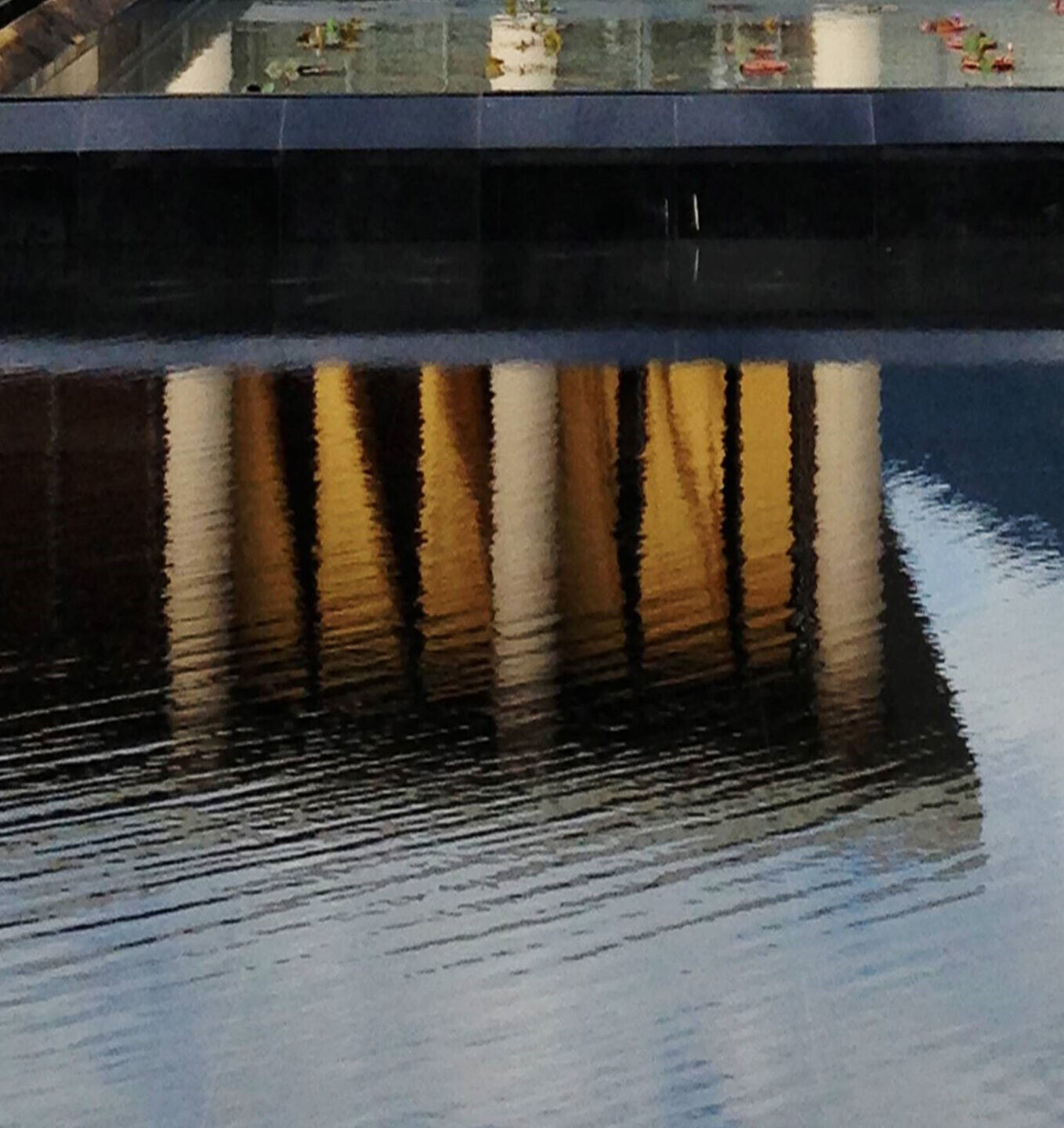
Suspended on top of a transparent glass base, the wooden exterior of the main hall appears to float in midair. Employing the same technique as the “Diamond Sutra,” here the characters of the “Heart Sutra” were punched through an expansive internal wall, revealing their meaning as daylight projects them onto hard surfaces. As the sun moves across the sky, these sacred words of light dance across concrete walls and columns, mirroring the effect of a prayer wheel, and seemingly slowing the passage of time itself.
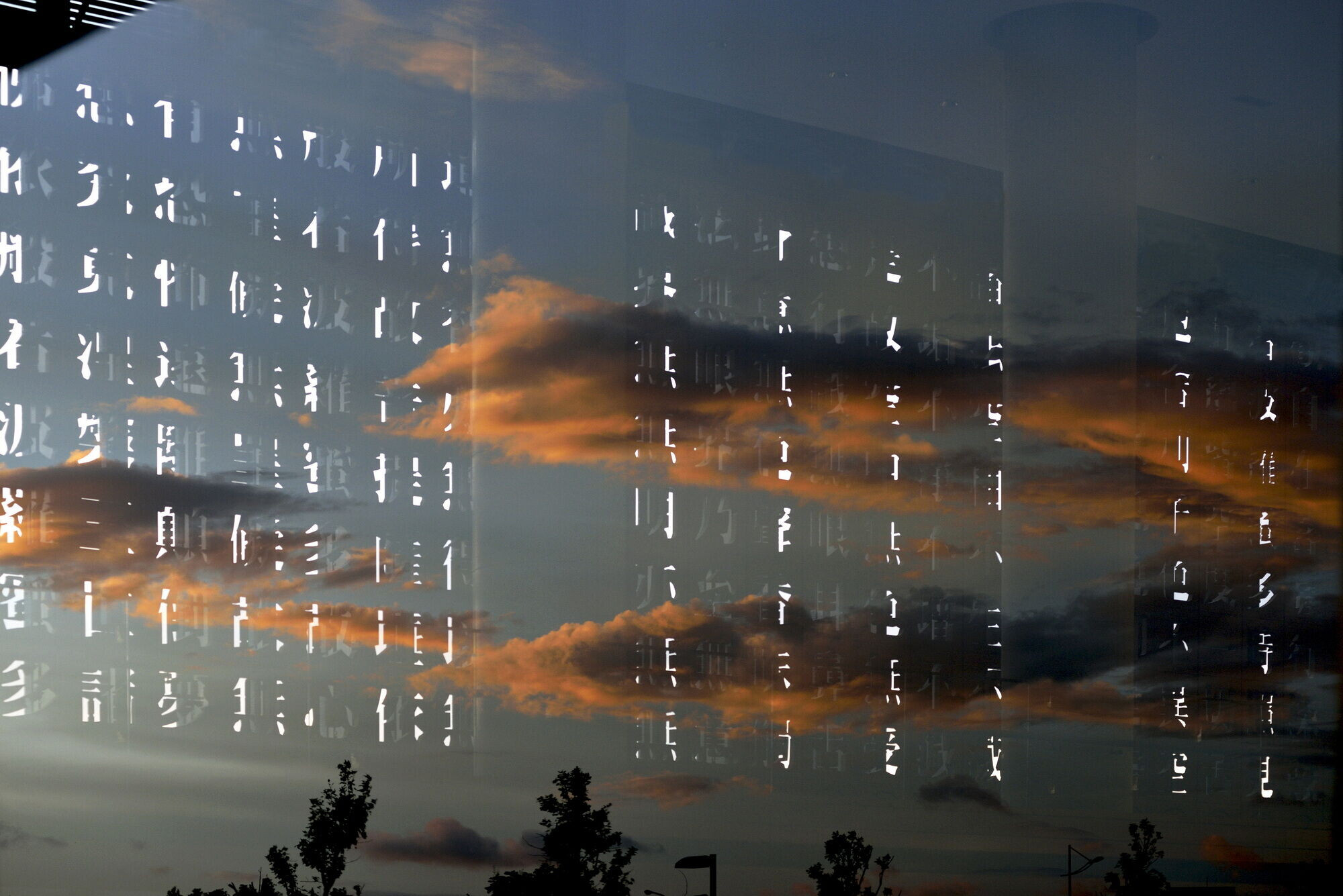
To the left of the vast pond, a 550-meter-long walkway is sandwiched between two concrete walls. This not only provides a circulation route where visitors may stumble upon worshipers and nuns, but also constitutes what Speaks (2015) describes as:

A wondrous sensory mixing chamber, where the controlled stream of noise and chaos from the city is reconditioned and made to blend with the sound of prayers, visitors’ chatter, and the soft shuffle of those moving about on concrete floors. (p. 1)

Daylight composes a steady rhythm of light and shade across the hallway, too, offering a metaphor for the recurring ups and downs of the human experience. The powerful aura of this space can soothe a troubled visitor, encouraging him to embrace life in both dark times and light.
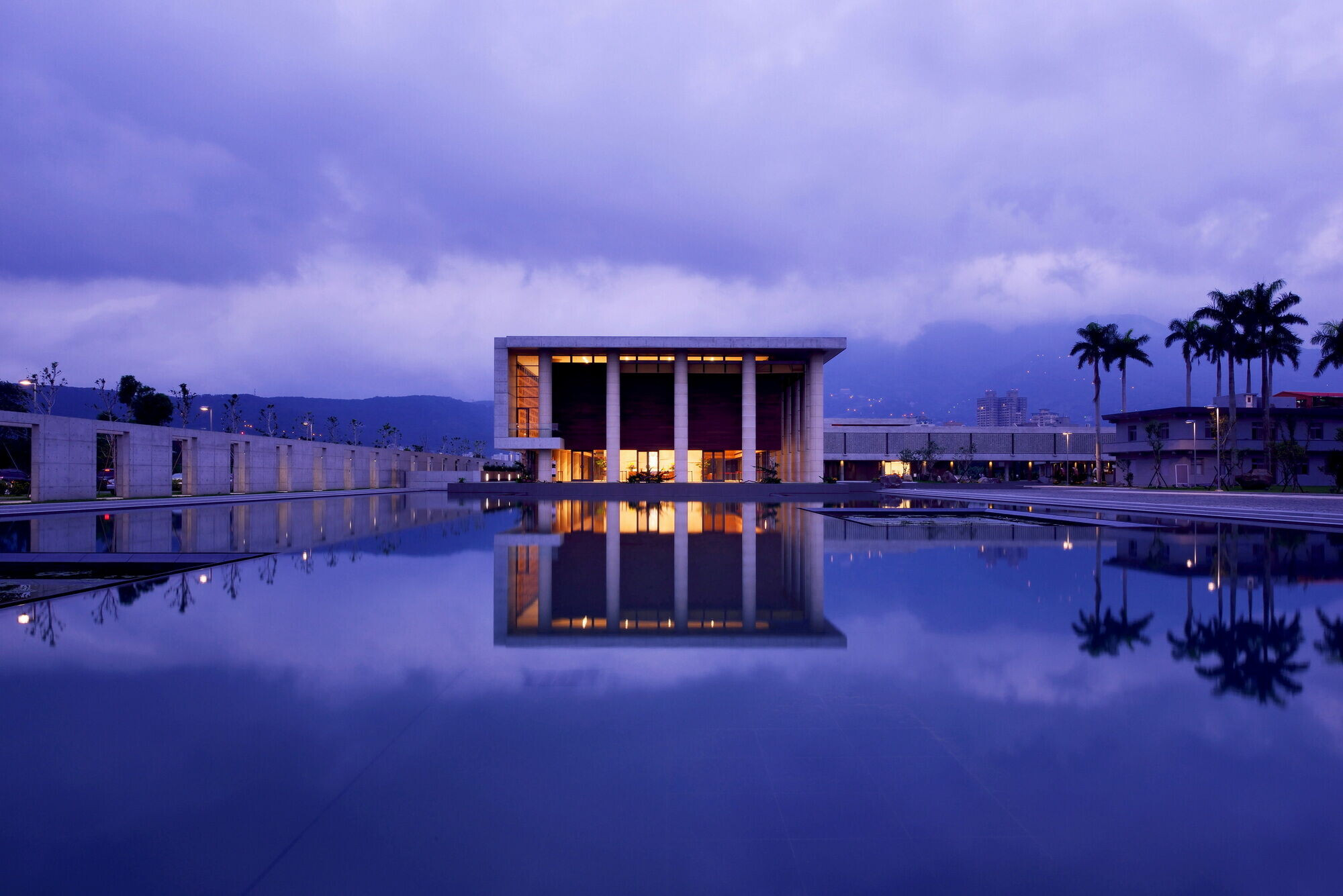
The primary material used for the monastery was concrete, its unadorned facade and muted color scheme intended to reflect the simplicity of Zen Buddhism. Inside the main hall, 108 Buddha sculptures are recessed into the wooden north-facing wall. Opposite this, a large glass wall allows natural light in and provides a broad view of the sky—at certain times of day, reflections of the sculptures appear in the sky, as if sitting among the clouds.
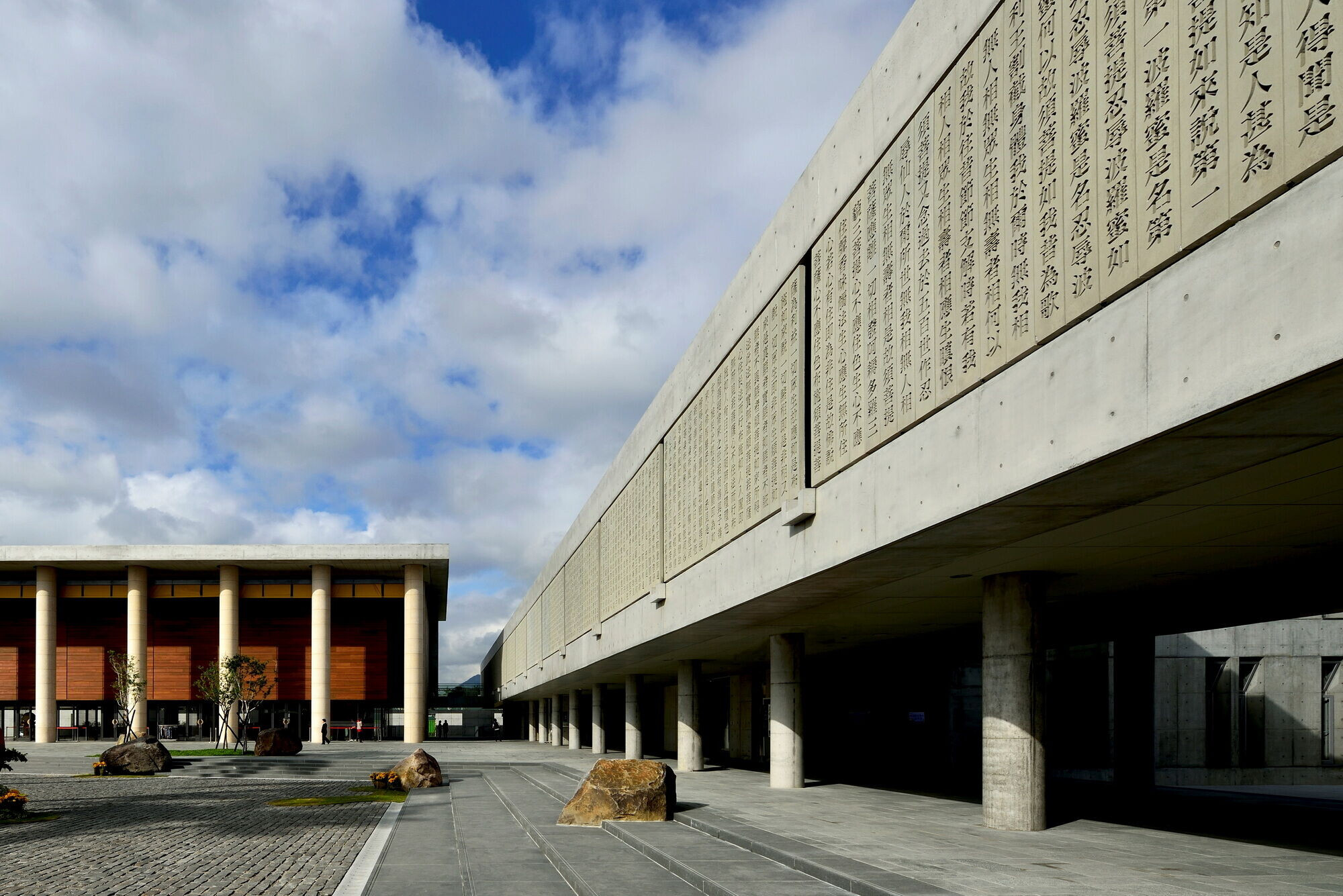
Whether you’re a devoted Buddhist looking for a place of worship, or a secular traveler seeking a refuge from the world, Water-Moon Monastery is the perfect place to focus on mind and spirit. The stresses of the city are left behind, and a journey through this serene space leaves visitors in a profoundly more relaxed state than when they arrived. With its unique presentation of Buddhist scriptures, together with an overall design that embodies Zen teachings, it offers an enlightening space for all.

CITATION
Speaks, Michael. “Quickening and Slowing: The Genius of Kris Yao’s Singular Modernism.” 30 x 30 Kris Yao / Artech Selected Works”, edited by Kris Yao. Beijing, 2015.
